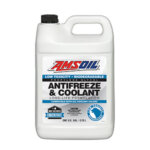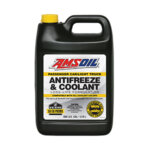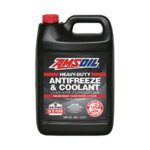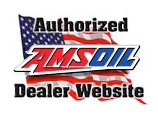12 Jul Coolant System Problems: NEGLECT!
Using a premium coolant on a routine schedule is excellent engine protection and lasts longer.
Coolant-system issues account for about 40 percent of engine problems, due to neglect of coolant maintenance. Coolant is a long-drain-interval product and is not in the fore-front of engine maintenance with coolant service intervals of five year or more. Compare that to engine oil, which you change at least of year or more.
Coolant Base
Coolant consists of a base (ethylene glycol or propylene glycol) mixed with additives and water. The base is primarily responsible for keeping your engine from turning into a block of ice in winter and Old Faithful in summer. The additives guard against corrosion, cavitation and scaling, and water does the job removing heat from the engine. Neglect leads to all kinds of problems, particularly if using inexpensive conventional green coolants found at almost every retailer.
Acid Technology
- The additives in these inexpensive coolants use inorganic-acid technology (IAT), which relies exclusively on inorganic salts such as nitrites, phosphates and silicates for protection. Formulating exclusively with inorganic salts has drawbacks. They deplete rather quickly and can lead to scale buildup and sludge if maintenance is neglected.
- One solution is to formulate the coolant using organic-acid technology (OAT). These coolants don’t contain phosphates, silicates and other inorganic salts, virtually eliminating problems associated with conventional green coolants.
- Finally, hybrid organic acid technology (HOAT). These coolants rely heavily on organic acids, but also use some inorganic salts to take advantage of their protective properties. A properly formulated HOAT coolant delivers long service life and excellent protection. Whichever coolant you use, it’s best to flush the system about every five years to maintain its health.
Some do-it-your selfers simply place a drain pan under the radiator and open the petcock. While it’s better than nothing, this quick-and-dirty service only removes about half the fluid.
Heavy-duty diesel supplemental coolant additives (SCAs)
Heavy-duty diesel operators often use supplemental coolant additives (SCAs). They’re designed to be added to the coolant about halfway through the service interval, replenishing the additives that have depleted. That sounds like a decent solution, but SCAs have drawbacks. For starters, they’re a challenge. The operator has to test the coolant using test strips and match the color of the strip to a chart accurately. If inaccurately matched, the operator risks adding too much SCA, which can cause additive “dropout.” This occurs when the additives separate from the coolant base and form sludge and slime that plug coolant passages. Too much SCA can also lead to scale buildup, which inhibits heat-transfer.
Fortunately, there’s a better way. You can use a high-quality coolant that doesn’t require the hassle of SCAs and that does a better job fighting common problems like scale, sludge and slime.
Amsoil Coolants
- Heavy-Duty Antifreeze & Coolant (ANTHD). It offers a recently improved HOAT formulation that delivers excellent protection against overheating and corrosion for up to 1 million miles, 20,000 hours or 8 years, whichever comes first, and it doesn’t require adding an SCA.
- For passenger car/light truck owners, we have AMSOIL Passenger Car & Light Truck Antifreeze & Coolant (ANTPC). It features an improved OAT formulation that eliminates additive drop-out, scaling and other issues inherent to conventional coolants. It’s pre-mixed 50/50 with high quality water and is compatible with all ethylene and propylene coolant colors.
- AMSOIL offers a Low Toxicity, biodegradable Antifreeze & Engine Coolant (ANT). Its new HOAT formulation delivers excellent protection for up to 150,000 miles or 5 years, whichever comes first, in passenger cars and light trucks. In heavy-duty applications, it lasts 1 million miles, 20,000 hours or 8 years whichever comes first, and is compatible with all ethylene and propylene coolant colors



Do a ‘search’ on my website blog for more articles on coolant/antifreeze

